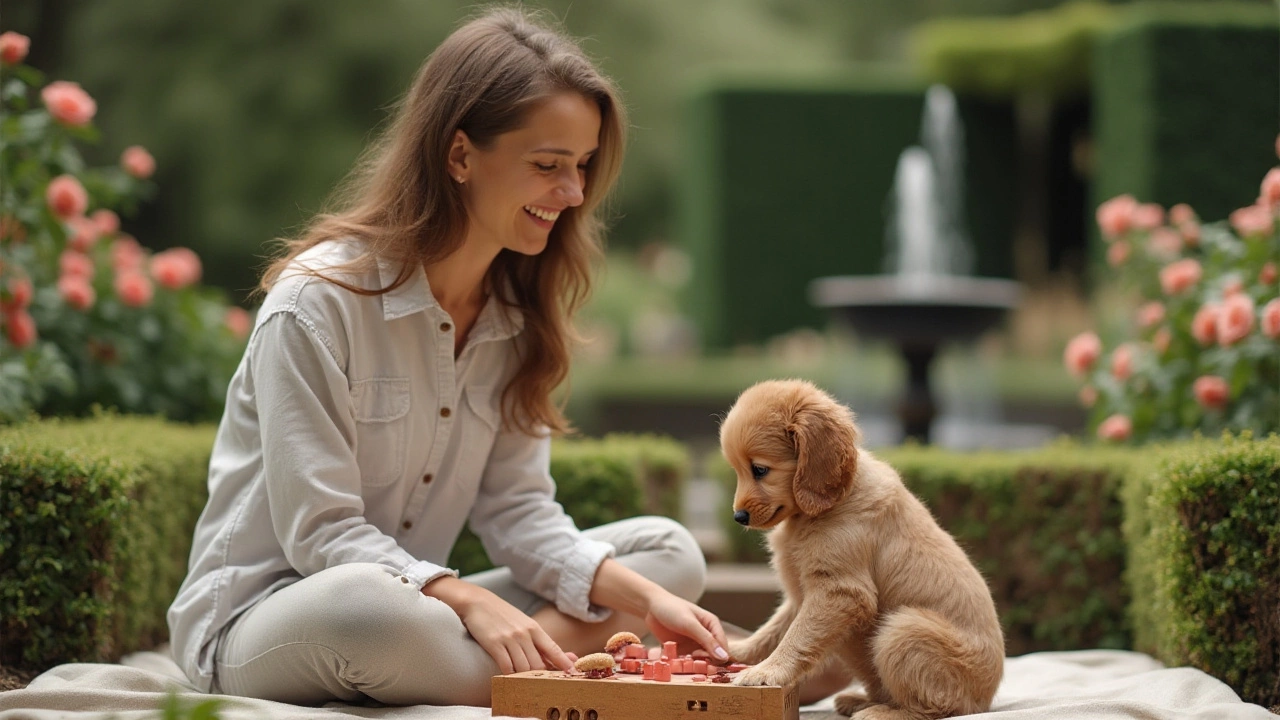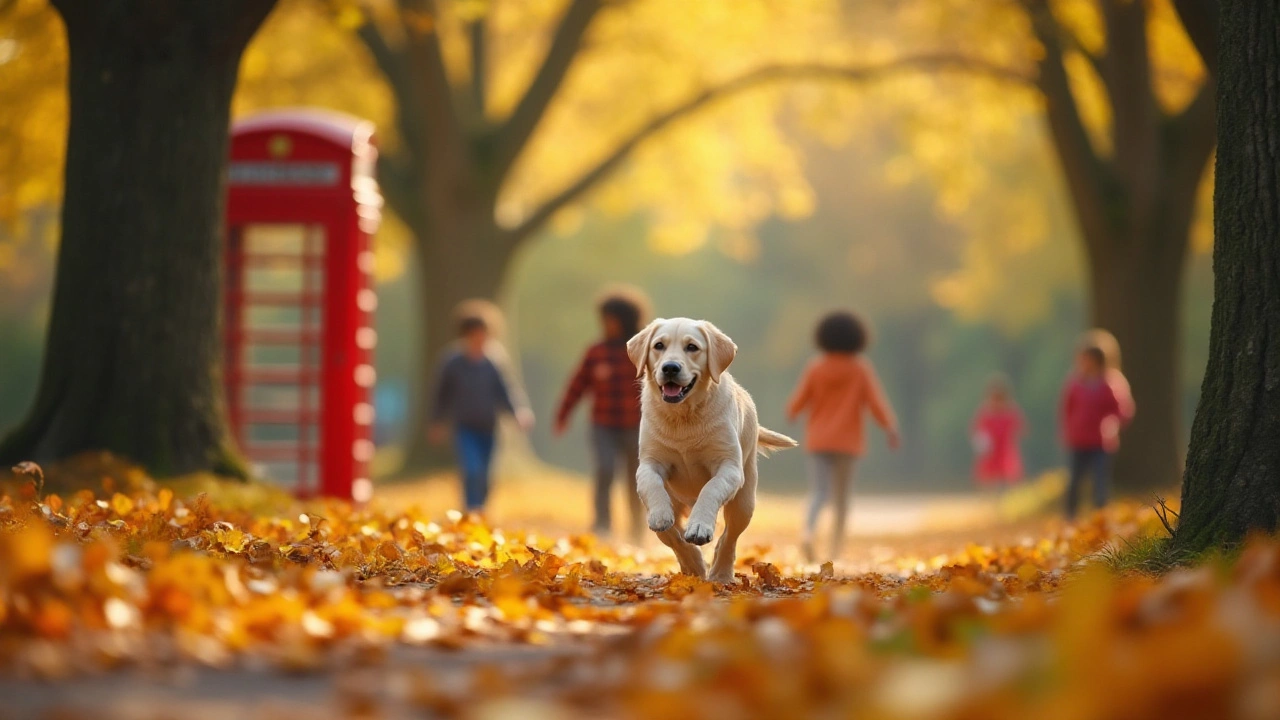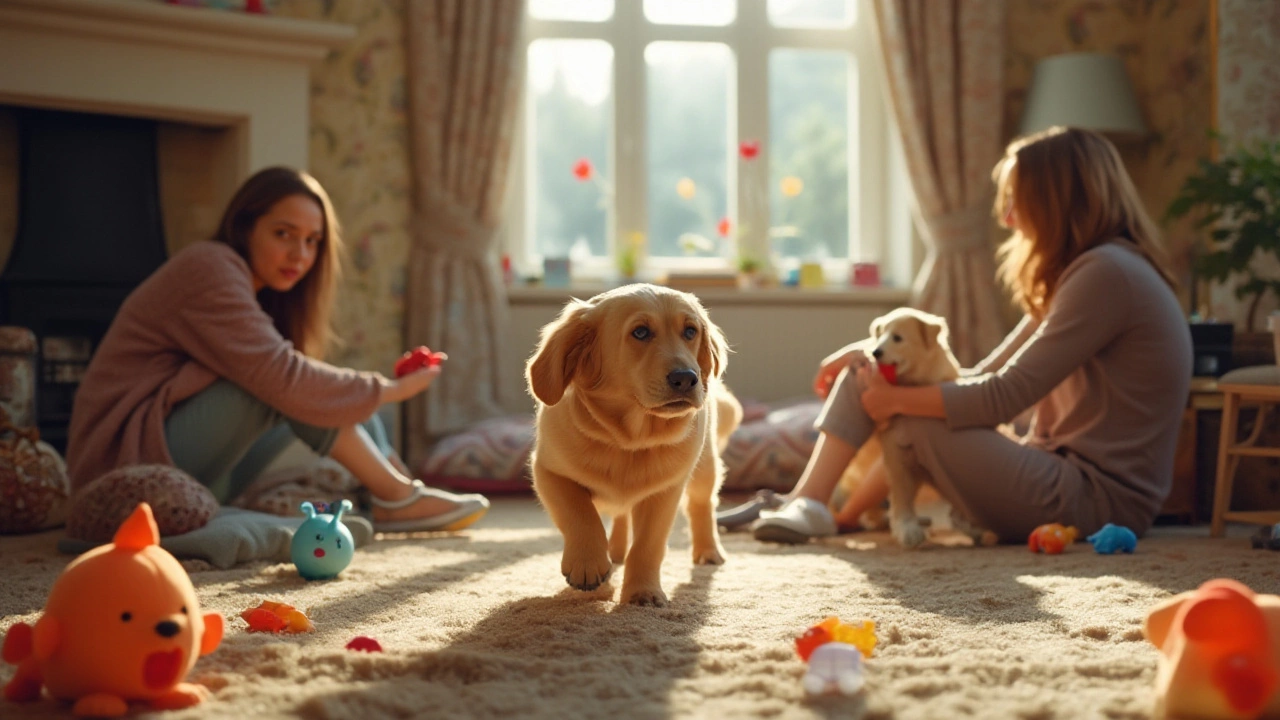Welcoming a new puppy into your family brings immense joy—and a whirlwind of excitement. These little bundles of energy are naturally curious and eager to explore every corner of their new home. Amidst all the chewing, chasing, and tail-wagging activity, you might find yourself pondering this question: Do I need to keep my puppy entertained all day long?
Understanding your puppy's needs involves more than just play. It’s about striking the right balance between engagement and downtime, ensuring they grow into happy, healthy dogs. Though you don’t need to lead every play session, you do need to ensure they have enough activities to keep them occupied, mentally and physically.
Let’s dive into how to make the most of your pup’s playtime, utilizing all kinds of toys and setting routines that fit both their needs and your lifestyle. A little planning today will pave the way for a positive, fulfilling relationship with your new furry companion.
- Understanding Puppy Energy Needs
- The Role of Toys in Puppy Entertainment
- Balancing Playtime with Downtime
- Creating a Daily Routine for Your Puppy
Understanding Puppy Energy Needs
Puppies, those adorable bundles of fur, are undoubtedly curious by nature. They burst with energy that seems unending, an essential trait stemming from their rapid growth and development. During the early months, understanding these energy needs helps in providing effective and thoughtful puppy management. Enriched playtime not only keeps them from getting into trouble but also channels their energy positively into learning new skills and activities.
At around two months old, puppies are much like young children with boundless enthusiasm, seeking adventure and excitement at every opportunity. Their energy levels can be compared to a flickering light bulb—constantly on the go but requiring short naps to recharge. Most puppies need about 18 to 20 hours of sleep interspersed throughout the day, ensuring they have enough rest for growing while allowing periods of play. Experts suggest that a puppy’s day should consist of a balance between play and rest, engaging them with activities for short bursts followed by quiet time.
You might wonder how much playtime is enough? Typically, a good rule of thumb is to play with your puppy for about 5 minutes per month of age up to twice a day. For instance, a three-month-old puppy might enjoy two 15-minute play sessions each day. It’s not just about physical energy, too; mental stimulation with enriching toys and social exposure contributes significantly to a pup’s development. According to Dr. John Doe, a leading vet in the field of animal behavior, “A puppy’s mental stimulation significantly affects their energy levels. Just like humans, engaging their minds can expend as much energy as physical activity.”
For a structured balance, consider creating a consistent daily routine that incorporates various types of exercises like fetching, tug-of-war, or simple walks, combined with quieter activities such as training sessions or puzzle toys. These routines not only manage their boundless energy but also provide structure, which can be especially beneficial for behavior management. It’s vital to observe your puppy’s cues; a happy, contented puppy will seem alert and cheerful, while an overstimulated puppy might become restless or overly vocal. By understanding the nuances of puppy energy needs, you ensure that you’re not just meeting their physical demands but also fostering a happy and healthy lifestyle that encourages positive behaviors.

The Role of Toys in Puppy Entertainment
Toys play an essential role in puppy entertainment and development. Imagine a world without toys; it's almost like that for a puppy without its colorful, chewy arsenal. Not only do they spark joy, but toys also provide mental and physical challenges crucial for a growing pup. These furry companions are akin to children—full of energy and a constant need to explore and learn. Toys offer a safe and constructive outlet for puppies to unleash their energy, hunt imaginary prey, and sharpen their physical skills.
When selecting the right puppy toys, diversity is key. Puppies get bored quickly with monotony. So having a mix of toys helps keep their interest alive. Consider toys that squeak, bounce unpredictably, or require the puppy to solve a puzzle—these can be especially effective. Not only do such toys capture their attention, but they also enhance cognitive skills by encouraging problem-solving and persistence. For teething pups, chew toys are especially valuable, easing discomfort while ensuring they don’t target your favorite shoes instead.
As famed animal behaviorist Patricia McConnell once noted, "A toy, from a puppy's perspective, isn't just a source of entertainment—it's a tool for learning and growth."
Incorporating a range of toys also aids in meeting a puppy's various developmental needs. From plush toys that offer comfort during rest times to interactive toys that promote engagement, they all serve a unique purpose. Toys that require manipulation or present challenges mimic environmental stimulations. This aspect ensures that a puppy does not just grow physically, but mentally as well. As puppies grapple with different textures and motions, their tactile senses blossom, keeping their minds sharp and inquisitive. For busy days or while working from home, a toy can be a lifesaver, giving your puppy something to do independently.
A lesser-known fact is the impact toys can have on a puppy’s relationship with family members. Playtime involving toys greatly enhances bonding moments between puppies and their humans. It builds trust and affection as you spend time interacting and acknowledging their playful nature. Additionally, it allows for the gentle imposition of boundaries, helping a puppy understand the nuances of acceptable force in play. Plus, toys can also aid in exercises like fetch or tug-of-war, which are not only gratifying but also vital for their exercise routine.
Of course, safety is the top priority when it comes to toys. Make sure each toy in your puppy’s collection is appropriate for their size and chew strength to avoid any unfortunate accidents. Regularly inspect toys for wear and tear and replace them when necessary. Even the most durable toys need replacing eventually. Ultimately, these tangible balls of fun are a necessity, not a luxury, for nurturing a happy, occupied, and well-adjusted pet. With thoughtful selection, toys can significantly enrich your puppy's life, and in the process, bring a lot of joy to your home too.

Balancing Playtime with Downtime
When it comes to puppies, knowing how to balance their energetic playtime with well-needed downtime is crucial. Puppies, much like human toddlers, require a combination of activity and rest to grow healthily. This balance is not only about wearing them out physically but also ensuring their mental and emotional needs are met. Oftentimes, new pet owners forget that over-exhaustion can make a puppy just as restless as being under-stimulated. So, the first step is tuning into your puppy's unique rhythms. Watch for signs of fatigue—like yawning or drooping ears—after a session with their favorite puppy toys. A puppy that’s too tired might become cranky, just like a child who missed their nap. Remember, downtime is crucial for their brain development as well. Studies have shown that sleep supports memory and learning, which is why nap times should be a non-negotiable part of their daily routine.
This doesn’t mean isolating them completely when it's time to rest. Consider creating a cozy and quiet environment where your pup can relax. A comfy bed in a corner shielded from foot traffic can be ideal. Gentle music or a white noise machine might also help some pups wind down after an exciting game of fetch. Furthermore, establishing clear signals between play and rest is beneficial. Try using specific toys for playtime and others solely for downtime, helping your puppy distinguish between the two states. Also, keep an eye out for pacing issues. If a puppy is too hyper, even after a good amount of exercise, they might need guidance in settling down. Encouraging quiet activities like puzzle games that engage their mind without demanding physical output is a smart strategy. It’s all about quality interaction, not just quantity.
An insightful remark from Dr. Sophia Yin, a renowned veterinarian and animal behaviorist, clarifies this concept well:
"It’s not about the hours of activities, but rather the engagement during those hours. Puppies thrive on enriched environments that cater to both play and peace."It’s an ongoing relationship, really, where you're understanding and nurturing your puppy's body clock. As a general guide, aim for a mix of 15-minute intense activities interspersed with longer breaks daily. Lastly, don’t underestimate the power of a good cuddle session. Not every moment with your puppy needs to be spent with dog playtime. Snuggling up on the couch is a wonderful way to strengthen your bond and provide that much-needed rest they crave in your presence.
For a simple structure, you can follow this play-rest routine:
- Morning: A brisk exercise session followed by a light breakfast and a long nap.
- Midday: Use interactive toys, encouraging solo play while you're present.
- Afternoon: A short walk or training with treats, enhancing learning, then some quiet time.
- Evening: Engage in active play like tug-of-war, dinner time, and then a wind-down routine.
Ultimately, balancing play and rest is about being attentive and adaptable, watching how your puppy responds to various rhythms and behaviors. This tailored approach ensures they remain healthy, happy, and ready to explore the world with you at every step. Finding this equilibrium is not only beneficial for them but also immensely satisfying for you as a pet owner.

Creating a Daily Routine for Your Puppy
Establishing a daily routine for your puppy is essential to their growth and happiness. Like children, puppies thrive on structured environments. A consistent schedule not only helps in setting boundaries but also teaches them self-discipline and confidence. Puppies are creatures of habit, so setting a routine from early on is vital to their development. Each day with your new furry friend requires a mix of exercise, training, feeding, and rest to keep them thriving. Knowing how to juggle these elements is the secret to a happy puppy and a peaceful household.
The day should ideally start with a brief walk or some exercise. Begin the morning by engaging in a bit of physical activity; a brisk walk around the block can help burn off some initial energy. It’s important to know that short, frequent exercise sessions are far better for a puppy than long strenuous ones. After returning, engage your pup with mental exercises that challenge their developing brain, using treat-dispensing or puzzle toys strategically placed around the space. Feeding time can seamlessly come right after, as puppies often have heightened hunger post-exercise.
Interspersed throughout the day should be varied periods of play with different puppy toys, which are a staple in every puppy routine. Toys like squeaky playthings for chewing, balls for chasing, and ropes for tug-of-war cater to their natural instincts and burn energy efficiently. Always supervise toy play to ensure safety and prevent any unintended swallowing of bits. Quiet times can involve gentle books or soft music which leads into naptimes. Puppies often need two to three naps a day to process all their new experiences and recharge.
As the day winds down, incorporate training into the routine. Short, focused training sessions work wonders for enhancing their intelligence and obedience. Dog trainers often say that five-minute trainings, sprinkled throughout the day, are quirky ways to make training a non-demanding, fun activity for you both. Always reward good behavior generously to reinforce what they’ve learned. George Adams, a renowned dog trainer, famously quoted,
"Consistency breeds comfort in puppies, creating predictability and reducing anxiety,"which rings exceptionally true in the realm of puppy routines.
Dinner follows another round of playtime or a short walk. By maintaining a balanced mix of physical and mental activities throughout their day, puppies sleep better and develop optimal health practices. Close the day with winding down routines that include soft petting or a gentle brushing session. This routine not only seals the bond between you two but ushers in a restful night of sleep for your pet, allowing them to wake up refreshed and ready to explore the world anew.
